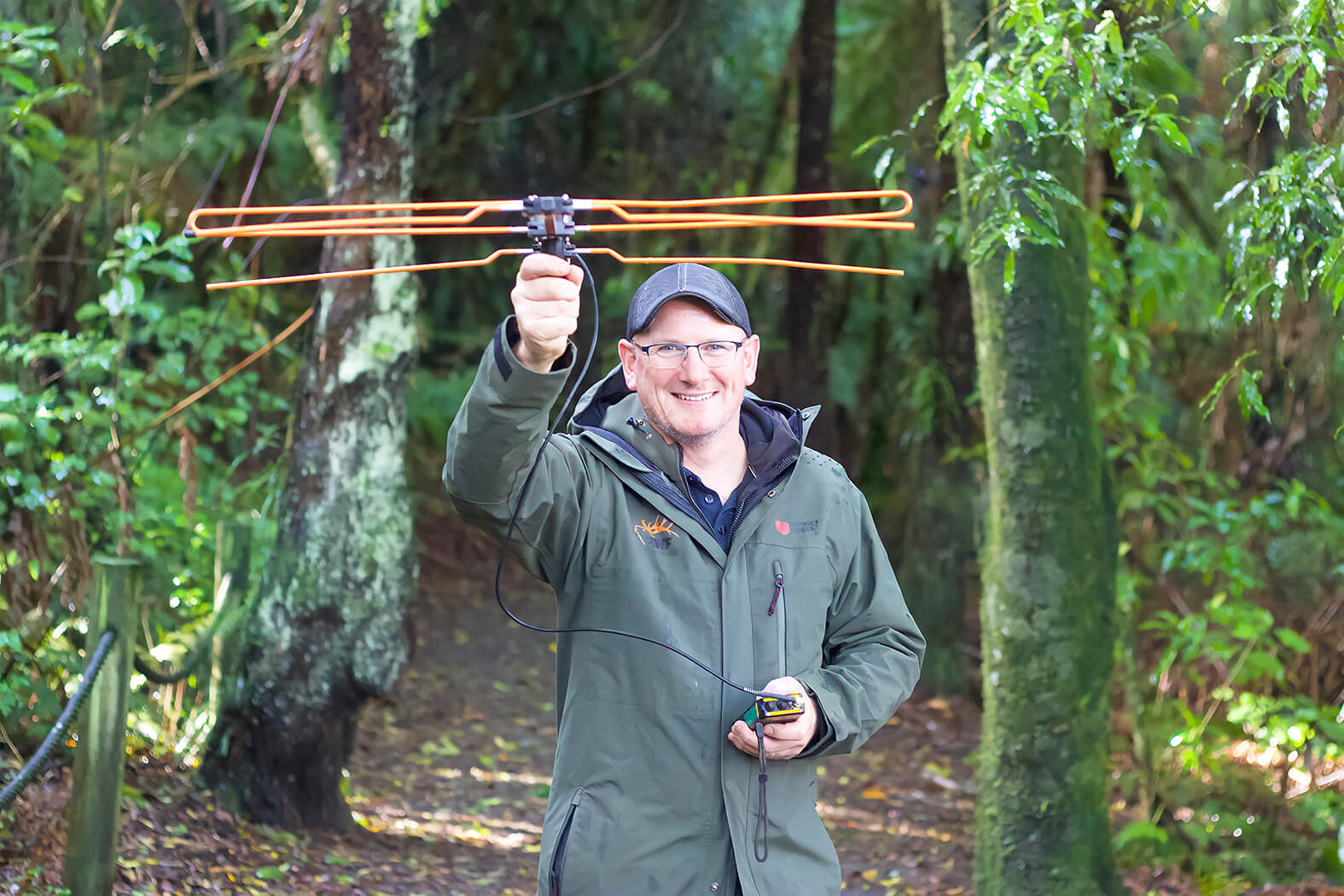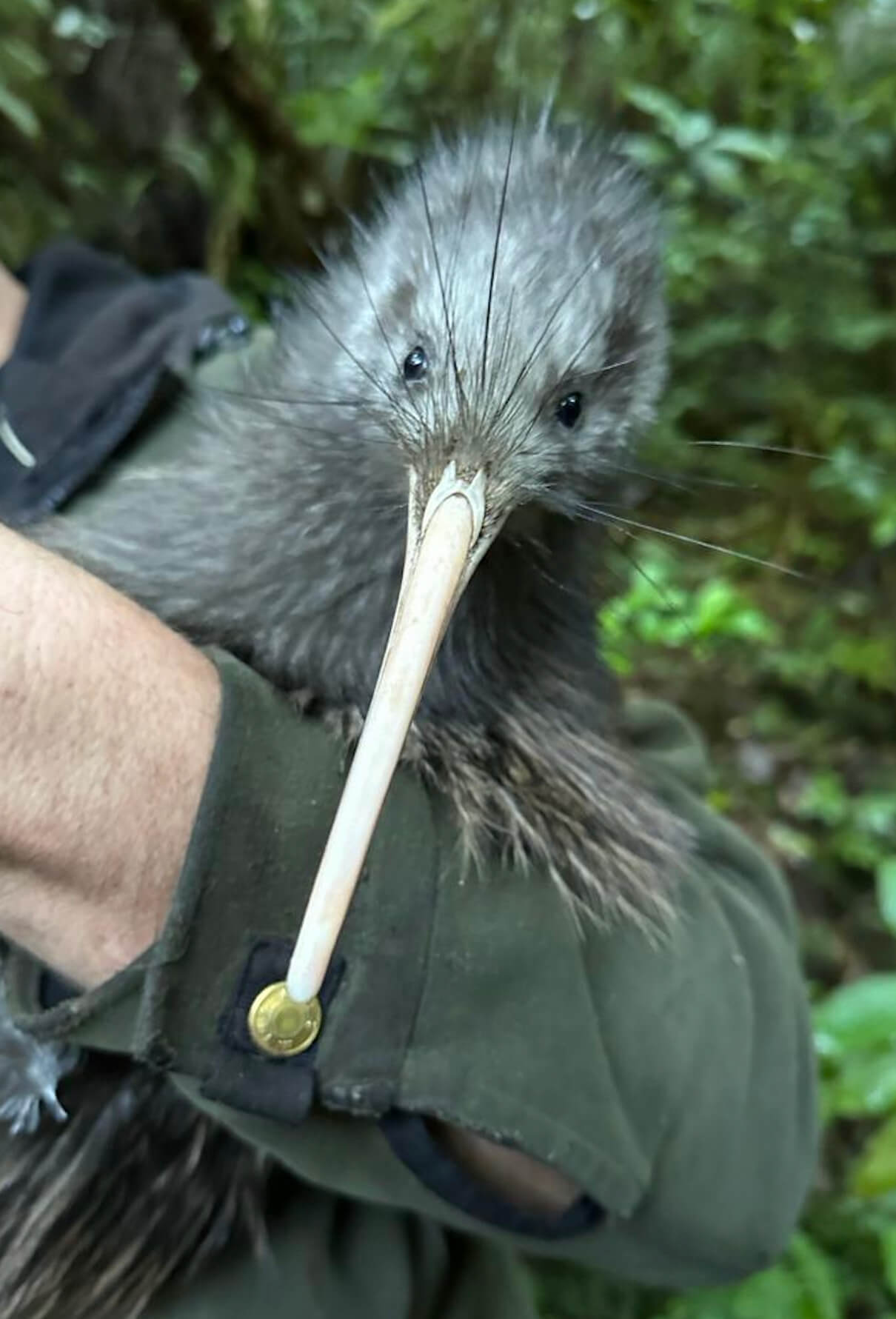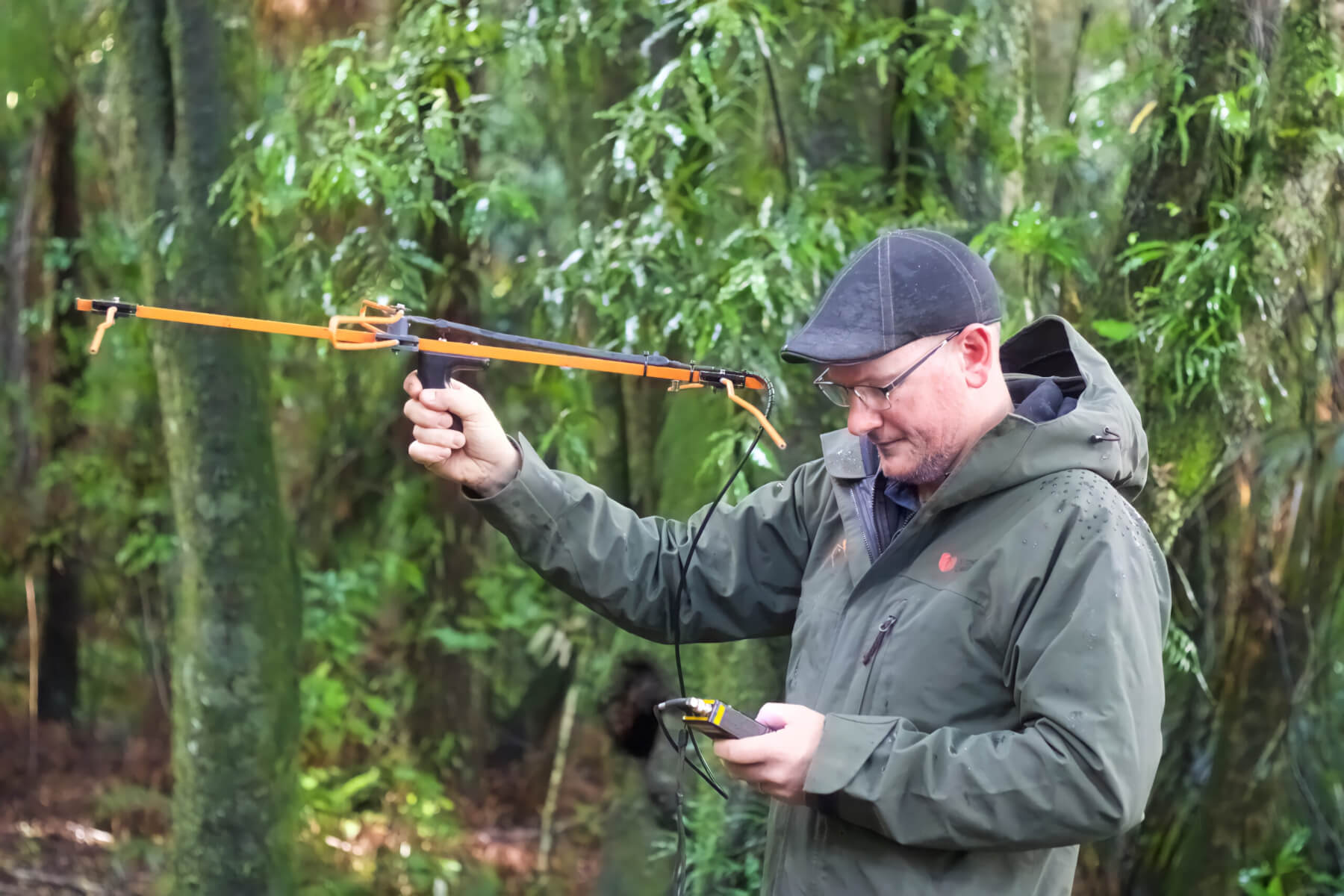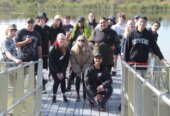
Kiwi ranger Craig Montgomerie with the telemetry gear he used to track kiwi on Sanctuary Mountain Maungatautari for most of Monday. On Tuesday morning, 25 kiwi were transported to Wellington.
A second allocation of 25 kiwi in as many weeks made the trip from Sanctuary Mountain Maungatautari and were welcomed in the capital – where they’ll be released into the Wellington hillside – on Tuesday.
Conservationists are calling the arrival of the North Island brown kiwi – the first half of which were transported on the same day last week – a milestone a significant step towards helping increase the number of kiwi in the wild.
The 50 are part of the Kōhanga Kiwi project, a breeding programme managed by Save the Kiwi on Sanctuary Mountain Maungatautari.
The 3400 hectare pest-proof fenced sanctuary is New Zealand’s largest.
Save the Kiwi – which works alongside iwi, conservation groups, communities, organisations, and the Department of Conservation (DOC) to create more kiwi-safe habitats around Aotearoa, therefore increasing their numbers in the wild – worked in partnership with Ngāti Korokī Kahukura, the gifting iwi, and alongside the Capital Kiwi Project team.
An array of volunteers and staff helped capture the kiwi on Maungatautari on Monday, and, among those finding them was kiwi ranger Craig Montgomerie.
His day began before dawn and, after spending most of the day with his telemetry equipment tracking the 25 kiwi which were eventually captured and transported, he told The News how special it was to be playing a part in such “ground-breaking conservation”.

Craig with one of the 25 kiwi which made the trip from Sanctuary Mountain Maungatautari to Wellington this week. Photo: Supplied.
Kiwi being caught for transportation are found in one of two ways – by teams of two people “night catching” them, or by using conservation dogs who lead their handlers to them.
The Maungatautari Ecological Island Trust was formed in 2001. Following advice from the Kiwi Recovery Group, for the original restoration plan goals for kiwi on Maungatautari, about 70 founding kiwi were released onto the maunga. In the past five years there have been a further 330 additional kiwi releases from other sites around the North Island, adding to the original 70 founding birds which were released between 2005 and 2015.
Starting this year, between March and May annually, about 250 kiwi will leave Sanctuary Mountain Maungatautari destined for other parts of the western region of the North Island.
“That is just amazing,” Montgomerie said.
“The goal has always been to go full circle – from being gifted taonga from other remnant populations, to now being able to start giving back. And, to see that becoming a reality, is hugely exciting.”
Montgomerie said a “mark and recapture” survey conducted last year indicated that today, roughly 2500 of New Zealand’s estimated 68,000 kiwi population call Maungatautari home.
Founding kiwi are microchipped, those hatched on the maunga are not.
The “mark and recapture” survey last year showed that four in five kiwi on the maunga hatched there.
“Being at a point where the maunga is able to give back to the wider
country is the result of two decades of blood, sweat, and tears put into the project from volunteers, staff and the community. Without them the maunga wouldn’t be able to celebrate this success,” Montgomerie said.
The 25 captured kiwi underwent pre-release health checks before leaving for Wellington, where they were welcomed with a pōwhiri on Tuesday at Pipitea Marae.

Kiwi ranger Craig Montgomerie with the telemetry gear he used to
track kiwi on Sanctuary Mountain Maungatautari.









